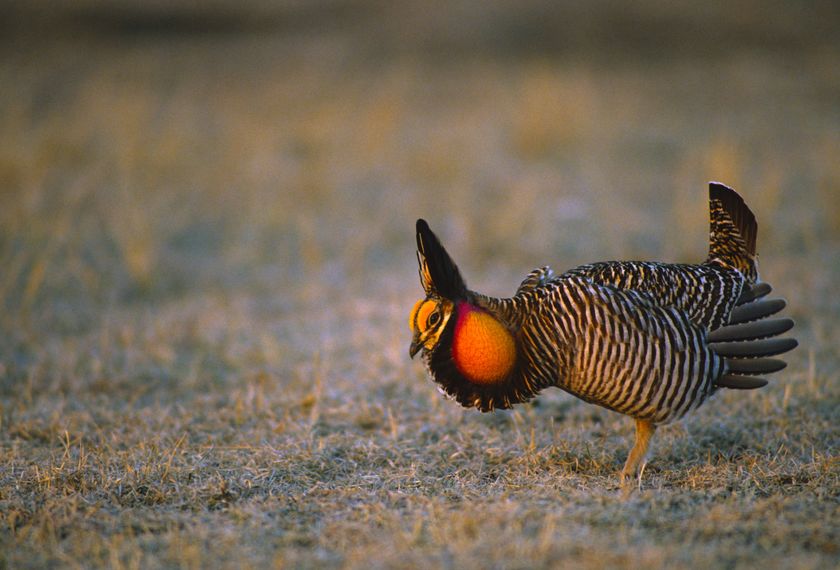With its decision to add the lesser prairie chicken to the endangered species list, the Biden administration is using the pretext of protecting a member of the grouse family to further curtail oil and gas development on private lands in five states.
Biden officials are seeking the listing of the prairie chicken as either threatened or endangered under the Endangered Species Act (ESA), depending on the region the creature inhabits. States in the proposed listing’s bullseye include Texas, Oklahoma, Kansas, Colorado, and New Mexico. Not coincidentally, the area includes the Permian Basin in West Texas and Southern New Mexico, which contains the nation’s most productive shale fields.
For years, environmental groups – well-schooled in the art of using the ESA to snuff out any natural- resources development not to their liking – have been trying to get the prairie chicken added to the endangered species list as a way to go after oil and gas development in the Permian Basin and anywhere else where the chicken can serve their purposes.
The Obama administration proved most accommodating and proposed listing the chicken under the ESA. But in 2015, a federal judge blocked that effort, ruling that the administration had not sufficiently considered other conservation alternatives to protect the creature’s habitat. Meanwhile, the oil and gas industry and other affected landowners along with state and local officials launched an initiative to preserve the lesser prairie chicken’s habitat.
On the Rebound
Their efforts bore fruit. The Wall Street Journal (June 230 notes that an October 2020 study prepared for the Western Association of Fish and Wildlife Agencies found that the population of lesser prairie chickens across the five states had nearly doubled, rising to 34,408 from 18,142 in 2014. This recovery took place without destroying any livelihoods in the affected area, allowing for the simultaneous growth in the number of lesser prairie chickens and oil and gas production.
Species recovery, however, is of no interest to the Biden administration and its green allies. Their goal is ending fossil-fuel production in the U.S. and transitioning to a decarbonized energy future. To that end, Biden has already suspended oil and gas production on federal land. Because, under law, the federal government cannot regulate fracking on private land (that’s done by the states), one way to snuff it out is the ESA. In this case, they’ve chosen a species that’s already making a comeback. But that’s no atter. This is about a “climate-saving’ energy transition, not about the lesser prairie chicken.
The listing also fits nicely into Biden’s 30 By 30 Plan, which aims to “protect” 30 percent of the nation’s land and water by 2030. Using the ESA to stop oil and gas development is one way to reach that goal. And you can rest assured that environmentally destructive wind turbines and solar arrays will still be allowed to despoil the countryside and the seashore. Indeed, the administration’s plans have the enthusiastic support of Big Tech, which may soon surpass governments around the world in bankrolling renewable energy projects. Amazon.com just announced commitments to buy 1.5 gigawatts of production capacity from 14 new wind and solar plants around the world as part of its push to purchase enough renewable energy to cover all of its operations by 2025. The Wall Street Journal notes that Alphabet’s Google, Facebook, and Microsoft are also opening their wallets to fund more taxpayer-subsidized wind and solar projects.
Joy in Beijing
Biden’s war on fossil fuels and Big Tech’s virtue-signaling commitments to wind and solar power are great news for China, which has a near monopoly on the rare earths that are used in wind turbines and is far and away the world’s leading producer of solar panels.
The lesser prairie chicken may not be the most impressive bird you’ve ever seen. But it’s part of a larger strategy that will lead to energy poverty in the U.S. and elsewhere and strengthen the geopolitical position of the country that brought us COVID-19.
